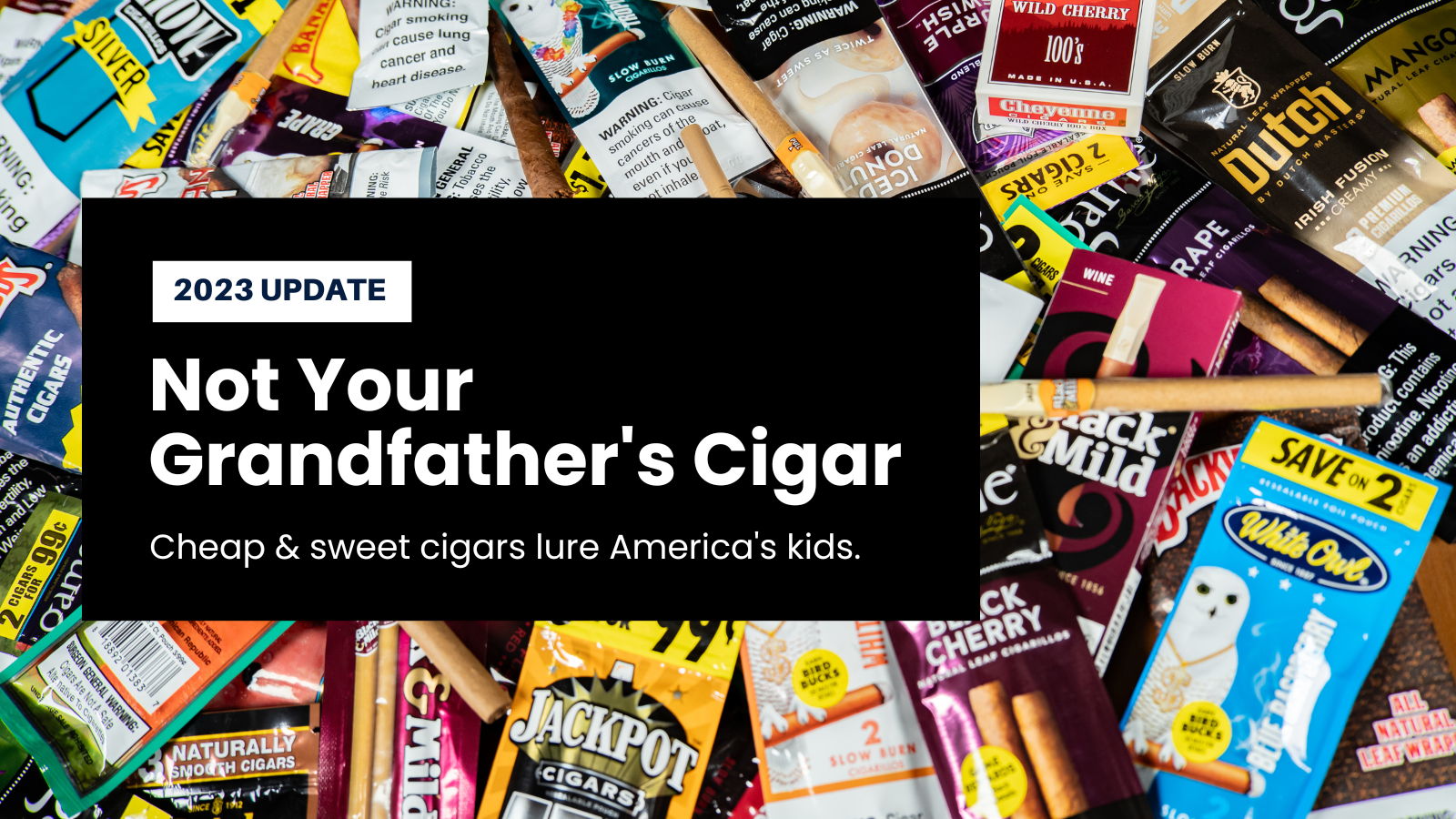New Report: Tobacco Companies Have Flooded the Market with Cheap, Flavored Cigars that Appeal to Kids
FDA Urged to Finalize Rule Prohibiting Flavored Cigars
October 04, 2023

WASHINGTON, D.C. – As the FDA prepares to issue a final rule prohibiting flavored cigars, a new report issued today by the Campaign for Tobacco-Free Kids and the Rutgers Institute for Nicotine and Tobacco Studies documents how tobacco companies have flooded the market with cheap, flavored cigars that appeal to kids and have used a variety of marketing strategies to attract young people.
Sales of all cigars more than doubled between 2000 and 2021, largely driven by increased sales of smaller cigars, many of which are flavored. The hundreds of flavored cigars make up about half the cigar market, with flavors ranging from fruit punch and grape to “Berry Fusion,” “Iced Donut” and “Cherry Dynamite.” These flavored cigars are colorfully packaged, widely available and priced as cheaply as 3 for 99 cents, increasing their appeal to price-sensitive kids.
These flavored products have helped make cigars the second most popular tobacco product among youth, after e-cigarettes. About 500,000 youth currently use cigars, and each day, more than 800 youth try cigar smoking for the first time. Black youth have the highest rates of cigar smoking, with Black high school students using cigars at 1.5 times the rate of White high schoolers.
The report comes as the FDA is about to issue a final rule prohibiting flavored cigars. The FDA announced a proposed rule in April 2022 based on evidence that cigar use poses serious health risks, flavors increase the appeal of cigars and make them easier to use, especially for youth, and removing flavored cigars from the market would reduce the number of youth who smoke cigars. Flavors are already prohibited in cigarettes except for menthol-flavored cigarettes, which the FDA is also proposing to prohibit.
These rules will have a profound benefit for public health and the FDA should finalize and implement them without delay. The report also calls on states and cities to continue their growing efforts to end the sale of all flavored tobacco products.
Other findings of the report include:
- Flavors have fueled the popularity of cigars among youth. Flavors improve the taste and mask the harshness of tobacco, making flavored tobacco products more appealing and easier for beginners, who are often youth, to smoke. Flavors in cigars increase youth initiation and progression to regular use and are also associated with greater potential for addiction. The majority of youth who have smoked cigars started with a flavored cigar. Nearly three quarters of youth who smoke cigars said they did so “because they come in flavors I like.” The most popular cigar brands among youth come in a dizzying array of candy and fruit flavors. Of concern, flavors can create the impression that a product is less harmful than it really is.
- Cigar smoking harms health. Cigar smoke is composed of the same toxic and carcinogenic constituents found in cigarette smoke. Cigar smoking causes cancer of the oral cavity, larynx, esophagus and lung, and daily cigar smokers have an increased risk of heart disease, chronic obstructive pulmonary disease (COPD), and aortic aneurysm. Further, the U.S. Surgeon General has warned that youth use of nicotine in any form is unsafe, can cause addiction and can harm adolescent brain development.
- Flavored cigars are marketed in ways that appeal to youth. Cigar makers use a variety of marketing strategies to attract young people, including shiny, colorful packaging that boldly communicates sweet flavors, engaging in popular social media trends, sponsoring concerts and other events, recruiting celebrities for endorsements, and keeping prices low. Cigars are also promoted through in-store displays, in magazines, and with branded merchandise and rewards programs. Many of these strategies are used to promote cigars specifically in Black communities.


